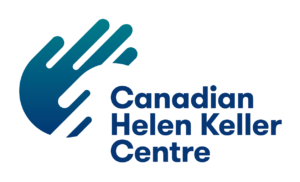Definitions
Deafblindness
An individual with a substantial degree of loss of both sight and hearing, the combination of which results in significant difficulties in accessing information and in pursuing educational, vocational, recreational and social goals.
Deafblindness is a unique and separate disability from deafness or blindness. An individual with the combined losses of hearing and vision require specialized services including adapted communication methods.
Intervenor
An Intervenor provides a professional service that facilitates the interaction of a person who is deafblind with other people and the environment. The Intervenor’s job can include:
- Providing access to information (auditory, visual, tactile)
- Acting as a sighted guide, braille, large print, communication boards, or any other method required.
Causes of Deafblindness
Please follow the links below to find out more about some of the leading causes of deafblindness
- Usher Syndrome
- CHARGE Syndrome
- Congenital Rubella Syndrome
- Premature Birth
- Age-Related Deafblindness
- Glaucoma Research Society of Canada
Methods of Communicating with People who are Deaf-Blind
Signed Languages
Sign language: A visual language with its own grammar and syntax. In Canada, there are two main sign languages: American Sign Language (ASL) and la langue des signes québécoise (LSQ).
Signing Exact English (SEE)
A sign system that matches signs with the English language.
Tactile American Sign Language (formerly called Manipulated or Modelled Sign Language)
Used primarily by deaf deaf-blind people who use ASL by holding the hands of the other conversational partner and feeling the hand movements.
Alphabet Based Systems
Fingerspelling: A form of sign language in which individual letters are formed by the fingers to spell out words
Two-Hand Manual: Letters of the English alphabet are formed by a speaker’s hand positions which are placed upon a recipient’s open relaxed palm.
The Deafblind Two-Hand Manual Alphabet
Print on Palm (POP): Printing large, capital letters on an individual’s palm
Print on Paper: Printing large capital letters on paper for individuals to read
Braille: A system of raised dots that can be read with the fingers by people who are blind or who have low vision
Moon Print: A code of raised shapes that corresponds to letters of the alphabet for people who are blind or have low vision
Symbol Systems
Object Cues: Cues are given to the individual who is deafblind in a predetermined order to communicate specific concepts, ideas and tasks.
Communication Boards: A display of English words or alphabet tactile symbols, art, pictograph symbols, etc. and is used to encourage the individual who is deafblind to communicate with individuals in their surroundings
Speech Based Systems
Voice Over: Words spoken in a tone, speed and volume that makes it able for the person who is deafblind to be able to hear what is being said.
Speech Reading: Looking at the speaker’s lips and through visual and contextual cues and exaggerated enunciation and lip movements gather an idea of what is being said.
Tadoma: The person who is deafblind places his hand on the face of the speaker, the thumb gently touching the lips and the other fingers spread over the cheek, jaw and throat.
Communication Systems
Hearing Aids: Assistive devices that individuals wear in their ear that amplify voices and noises in the environment.
Cochlear Implants (CI): Devices that are surgically implanted into an individual’s ear that is hooked up to a transmitter. This allows individuals who have severe or profound hearing loss to be able to hear speech and/or environmental noises.
FM Systems: A transmitter worn by the speaker which is transmitted directly to the personal receiver blocking out other environmental sounds.
Links and Resources:
Canada
Alliance for Equality of Blind Canadians (AEBC): To increase awareness of rights and responsibilities so blind, deafblind and partially sighted individuals can have equal access to the benefits and opportunities of society.
Association du syndrome de Usher du Quebec (ASUQ): Promotes independent living for people with Usher syndrome living in Quebec.
Balance for Blind Adults: Provides Life Skills Training for individuals who are blind.
Bob Rumball Centre of Excellence for the Deaf: Multi-purpose, multi-program facility that functions both as a community centre for the Deaf, and as a provider of services to the Deaf.
Canadian Deafblind Association (CDBA): National organization with chapters in each province, whose goal is to promote and enhance the well-being of people who are congenitally deafblind.
Sensity: Providing support and services to individuals who are deafblind and their families throughout the province of Ontario.
Canadian Foundation for Physically Disabled Persons (CFPDP): Assists individuals with physical challenges to live fuller lives and raise awareness of their achievements and contributions to society.
Canadian Hard of Hearing Association (CHHA): The national voice of all hard of hearing Canadians.
Canadian Hearing Society (CHS): Offers services, including sign language interpreting, employment consulting, sign language instruction, hearing tests, hearing aids and counseling for deaf and hard of hearing Canadians.
CNIB Deafblind Community Services: Provides services to individuals across Canada to whom loss of vision is a central problem in personal and social adjustments.
Canadian National Society of the Deafblind (CNSDB): A national consumer-run advocacy association dedicated to helping Canadians who are deafblind achieve a higher quality of life.
Deafblind Network of Ontario (DBNO): Individuals and organizations who work for the improvement of services for all Ontarians who have the dual disability of deafblindness.
Deafblind Ontario Services: Provides Intervenor, residential and other specialized services to individuals who are deafblind
Fighting Blindness Canada (FBC): To lead the fight against blindness by advancing retinal disease research, education and public awareness.
George Brown College – Deafblind & Intervenor Studies Program: The Intervenor for Deafblind Persons program enables students to learn how to work with people who have a combined loss of vision and hearing.
Helen Keller National Centre: A residential training centre located in New York State. Giving people who are deaf-blind the tools to live, work and thrive in the communities of their choice.
Inclusive Design Research Centre (IDRC): A research and development centre at OCAD University where an international community work together to ensure that emerging information technology and practices are designed inclusively.
Institut Nazareth et Louis-Braille: Develop independence and to promote the full participation of the person with a visual impairment living in the province of Quebec.
Intervenor Organization of Ontario (IOO): The Intervenor Organization of Ontario (IOO) is the first Canadian organization of its kind, supporting the profession of Intervention.
North York Seniors Centre: Provides programs and services to promote the physical. Emotional and social well-being of adults 55+ living in the community of North York.
Resource Centre for Manitobans who are Deafblind: Exists to promote opportunities for independence, dignity and empowerment for adults in Manitoba who have become Deaf-Blind.
Sense: A national charity that supports people who are deafblind, have sensory impairments or complex needs, to enjoy more independent lives.
United Kingdom
Royal National Institute of Blind People (RNIB) (England): Offers support and advice to blind and partially sighted people in the UK.
United States
The American Macular Degeneration Foundation (AMDF): To help individuals learn about and live with Age-related Macular Degeneration (AMD).
National Center on Deaf-Blindness: As a national technical assistance center that works to improve the quality of life for children who are deaf-blind and their families.
National Foundation of the Blind: The largest and most influential membership organization of blind people in the United States.
International
Deafblind International (DbI): An international not-for-profit membership organization focused on the needs of individuals who are deafblind, their families and the professionals who provide service.
General Resource Links
Caring.com: Assisted living is a type of care for older adults who need help with normal daily activities that’s provided in a residential facility.


